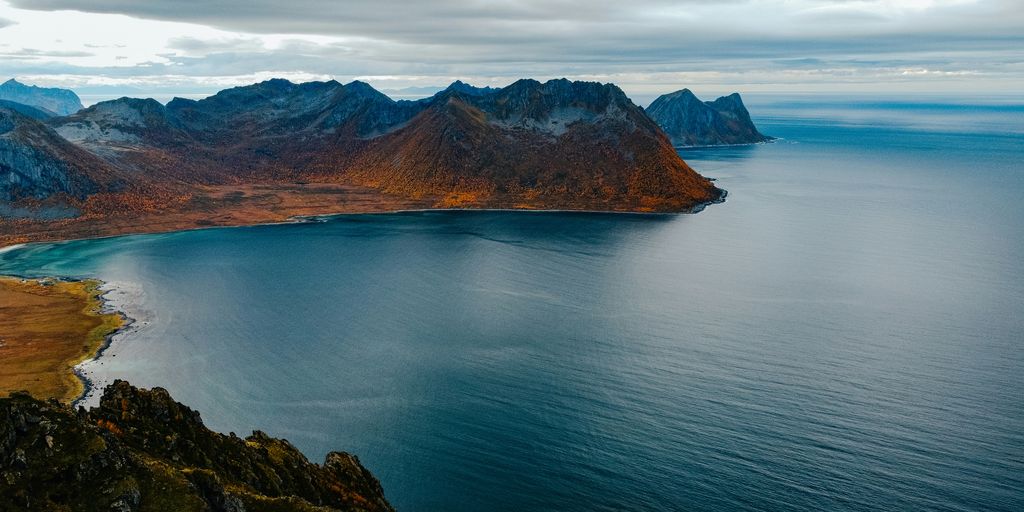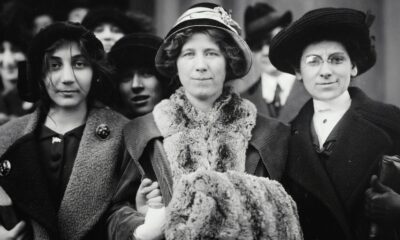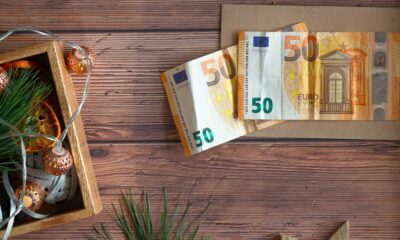Europe News
15 Surprising Things You Didn’t Know About Norway

Norway is a captivating country filled with stunning landscapes, rich history, and unique cultural quirks. From the enchanting Midnight Sun to the fascinating Viking heritage, there’s so much to discover about this Scandinavian gem. In this article, we’ll explore 15 surprising facts about Norway that you might not have heard before, shedding light on the country’s remarkable traditions and natural wonders.
Key Takeaways
- Norway experiences the Midnight Sun, where the sun doesn’t set for weeks during summer.
- The Northern Lights can be seen in Norway, making it a prime location for this stunning natural display.
- The cheese slicer, a common kitchen tool worldwide, was invented in Norway.
- Norway has a rich Viking heritage, with many historical sites and museums dedicated to this fascinating era.
- The country is home to Europe’s largest herd of wild reindeer, roaming freely in beautiful landscapes.
1. Midnight Sun

The Midnight Sun is a fascinating natural event that happens in Norway during the summer months. From May to July, parts of Norway experience up to 78 days of continuous sunlight. This means that the sun does not set, allowing for long days filled with light.
What to Expect
- Extended Daylight: Enjoy outdoor activities late into the evening.
- Unique Experiences: Witness the stunning landscapes under the glow of the sun at midnight.
- Cultural Events: Participate in local festivals that celebrate this phenomenon.
Best Places to Experience the Midnight Sun
| Location | Duration of Midnight Sun | Best Time to Visit |
|---|---|---|
| Tromsø | 78 days | May to July |
| Svalbard | 100 days | April to August |
| Nordkapp | 80 days | May to July |
Visiting Norway during the Midnight Sun offers a unique chance to experience the country in a completely different light, making it a memorable adventure.
This natural wonder is a must-see for anyone travelling to Norway, as it showcases the beauty of the country in a way that is truly special. Don’t forget to pack a sleeping mask if you’re sensitive to light!
2. Northern Lights
The Northern Lights, also known as the aurora borealis, are a stunning natural light display that can be seen in Norway, especially in the northern regions. This phenomenon occurs when charged particles from the sun collide with the Earth’s atmosphere, creating beautiful colours in the sky.
Best Time to See the Northern Lights
- Winter Months: The best time to witness the Northern Lights is during the winter, particularly from late September to early April.
- Peak Hours: The most vibrant displays usually happen between 11 PM and 2 AM.
- Location Matters: Areas with low light pollution, such as the Lofoten Islands, Tromsø, and Svalbard, are ideal for viewing.
Tips for Viewing
- Check the Weather: Clear skies are essential for a good view.
- Stay Up Late: Be prepared to wait, as the lights can appear at any moment during the peak hours.
- Dress Warmly: Temperatures can drop significantly, so wear layers to stay comfortable.
The Northern Lights are not just a sight; they are an experience that connects you with nature in a profound way.
In summary, Norway is one of the best places in the world to see the Northern Lights, making it a must-visit for anyone seeking adventure and beauty in the great outdoors.
3. Cheese Slicer
Norway is famous for many things, but one of its most useful inventions is the cheese slicer. This handy tool, known as the ostehøvel, was created by Thor Bjørklund in 1925. It quickly became a must-have in every Scandinavian kitchen and is still widely used today.
Key Features of the Cheese Slicer
- Simple Design: The cheese slicer has a straightforward design that makes it easy to use.
- Versatile: It can slice various types of cheese, from hard to soft.
- Efficient: It allows for even slices, making it perfect for sandwiches or cheese platters.
Popularity in Norway
The cheese slicer is not just a kitchen tool; it is a part of Norwegian culture. Many households prefer to slice their cheese fresh rather than buying pre-sliced options. This tradition keeps the cheese tasting fresh and delicious.
The cheese slicer has become a symbol of Norwegian innovation, showing how a simple idea can change everyday life.
Fun Facts
- The first mass production of the cheese slicer began in 1927.
- It is now used in kitchens all around the world.
- Norwegians enjoy a variety of cheeses, including the famous brown cheese, which is often sliced with this tool.
In conclusion, the cheese slicer is a remarkable invention that highlights Norway’s contribution to kitchen tools. Its enduring popularity shows how a simple design can make life easier and tastier!
4. Viking Heritage
The Vikings were not just bloodthirsty plunderers; they were skilled traders, explorers, and settlers. From around AD 750 to 1100, they ruled over parts of Norway, leaving behind a rich historical legacy. Today, you can find many visible traces of their culture throughout the country.
Key Contributions of the Vikings
- Exploration: The Vikings were among the first Europeans to reach North America, with Leif Eriksson landing there around the year 1000.
- Trade: They established extensive trade routes that connected Norway with other parts of Europe and beyond.
- Cultural Influence: Viking traditions and stories still influence Norwegian culture today, from folklore to modern literature.
Viking Achievements
| Achievement | Description |
|---|---|
| Longships | Advanced ships that allowed for ocean travel. |
| Settlements | Established towns in places like Dublin and York. |
| Art and Craftsmanship | Known for intricate metalwork and wood carvings. |
The Viking Age was a time of great change and development in Norway, shaping the nation into what it is today. Their legacy is still felt in the culture and identity of the Norwegian people.
In summary, the Viking heritage is a vital part of Norway’s history, showcasing their influence on trade, exploration, and culture. Understanding this era helps us appreciate the depth of Norway’s past and its impact on the present.
5. Hardangervidda Plateau
The Hardangervidda Plateau is the largest mountain plateau in Europe, covering an area of about 3,400 square kilometres. This stunning region is not only known for its breathtaking landscapes but also for being home to the largest population of wild reindeer on the continent, with around 7,000 roaming freely here.
Key Features of Hardangervidda
- Vast Wilderness: The plateau features expansive plateaus, lush valleys, and high mountains.
- Diverse Wildlife: It is a sanctuary for various species, including the majestic wild reindeer.
- Natural Beauty: Visitors can enjoy stunning views of glaciers, waterfalls, and fjords.
Importance of the Plateau
The Hardangervidda National Park is crucial for conservation efforts, protecting both the unique ecosystem and the cultural heritage of the Sami people, who have lived in harmony with nature for centuries.
The Hardangervidda Plateau is a place where nature thrives, showcasing the beauty and diversity of Norway’s landscapes.
Quick Facts
| Feature | Details |
|---|---|
| Area | 3,400 km² |
| Wild Reindeer Population | Approximately 7,000 |
| National Park Established | 1981 |
6. Longest Road Tunnel
The Lærdal Tunnel in Norway holds the title of the world’s longest road tunnel, stretching an impressive 15 miles (24.5 km). This engineering marvel connects the towns of Lærdal and Aurland and cost around 1 billion Norwegian kroner to construct, which is roughly USD $110 million.
Key Features of the Lærdal Tunnel
- Length: 15 miles (24.5 km)
- Cost: 1 billion NOK (approx. USD $110 million)
- Opened: November 2000
The tunnel is designed with the driver’s comfort in mind. To help reduce the mental fatigue of long drives, it includes several unique features:
- Caves: Every 6 km, there are caves that break the monotony of the drive.
- Lighting: The lighting changes throughout the tunnel and caves, providing a varied experience.
- Traffic Monitoring: Cameras at both ends track the number of vehicles, ensuring quick responses in case of emergencies.
Driving through the Lærdal Tunnel is a unique experience, and the thoughtful design truly makes a difference in comfort.
If you ever find yourself in Norway, consider taking the scenic ‘snow road’ back, which is one of the country’s national scenic routes. However, be aware that it is closed for half the year due to snow.
7. Nobel Peace Prize
The Nobel Peace Prize is awarded annually in Oslo, Norway, making it a significant event for the country. Since its inception in 1901, the ceremony has taken place at Oslo’s City Hall, where the world gathers to honour those who have made remarkable contributions to peace.
Key Facts About the Nobel Peace Prize:
- Established: 1901
- Location: Oslo, Norway
- Awarded by: Norwegian Nobel Committee
The Nobel Peace Centre, located near the City Hall, offers insights into the history of the prize and showcases exhibitions about the current laureate. Here are some notable aspects of the prize:
- Alfred Nobel’s Vision: The prize was created by Alfred Nobel, a Swedish inventor, who wanted to reward those who work towards peace.
- Global Recognition: Winning the Nobel Peace Prize is one of the highest honours in the world, bringing attention to important issues.
- Diverse Winners: The prize has been awarded to individuals and organisations from various backgrounds, including activists, leaders, and humanitarian groups.
The Nobel Peace Prize serves as a reminder of the ongoing struggle for peace and the efforts of those who dedicate their lives to this cause.
Each year, the ceremony not only celebrates the winners but also highlights the importance of peace in our world today.
8. Salmon Sushi
You might think of sushi as a traditional Japanese dish, but Norway played a key role in introducing salmon sushi to Japan. In the 1980s, Norwegian fish was brought to Japan due to a shortage of local fish stocks. This led to a significant partnership that changed the sushi scene forever.
The Journey of Salmon Sushi
- Introduction: Norwegian salmon was first suggested to Japanese chefs in the 1980s.
- Health Concerns: Initially, there were worries about the safety of eating raw salmon, but these concerns were eventually overcome.
- Popularity: Today, salmon sushi is a favourite among many, especially younger generations in Japan.
Impact on Norwegian Seafood Exports
The introduction of salmon sushi has had a lasting impact on Norway’s economy. Here’s a quick look at the numbers:
| Year | Salmon Exports to Japan (in tonnes) | Growth Rate (%) |
|---|---|---|
| 1980 | 1,000 | – |
| 1990 | 5,000 | 400 |
| 2000 | 20,000 | 300 |
| 2020 | 50,000 | 150 |
The success of salmon sushi has made seafood one of Norway’s biggest industries, showcasing the country’s rich marine resources.
Norwegian salmon is now a staple in sushi restaurants worldwide, proving that sometimes, a simple idea can lead to big changes in culinary traditions.
9. Wild Reindeer
When you think of wild reindeer, you might picture them in the Arctic, but the largest herd in Europe actually resides in Norway. These magnificent animals roam freely across the Hardangervidda National Park, which is known for its stunning landscapes, including vast plateaus and beautiful valleys.
The Herd Size
The wild reindeer population in Norway can be quite impressive. Here’s a quick look at the numbers:
| Season | Estimated Number of Reindeer |
|---|---|
| Winter | 25,000 |
| Hardangervidda | 7,000 |
Interesting Facts
- Cultural Significance: Reindeer are an important part of the Sami culture, who have lived in Norway for centuries.
- Adaptations: These animals have thick fur and special hooves that help them navigate snowy terrains.
- Migration: Wild reindeer migrate seasonally, moving to find food and better living conditions.
The experience of seeing wild reindeer in their natural habitat is truly magical. Many visitors to Norway find it humbling to witness these creatures up close, especially in places like Tromsø, where you can also learn about Sami traditions.
In summary, Norway is home to Europe’s largest herd of wild reindeer, making it a unique destination for wildlife enthusiasts and those interested in the rich cultural heritage of the Sami people.
10. King Penguin
A Unique Military Mascot
Norway has a rather unusual military mascot: a king penguin named Nils Olav. This penguin has been part of the Norwegian King’s Guard since 1972, when the regiment adopted him from the Edinburgh Zoo. Over the years, Nils Olav has been promoted through the ranks, becoming a Brigadier in 2016.
The Legacy of Nils Olav
The name Nils Olav has been passed down through three different king penguins:
- Nils Olav I – The original mascot adopted in 1972.
- Nils Olav II – Promoted to Corporal in 1982 and knighted in 2008.
- Nils Olav III – The current holder of the title since 2016.
Fun Facts About Nils Olav
- Nils Olav is not the only animal to hold a military rank; other animals like Wojtek the bear have served in the military.
- The penguin’s rank is a symbol of the friendship between Norway and Scotland.
- Nils Olav has become a beloved figure, attracting visitors to the zoo and the Norwegian military events.
Nils Olav’s story shows how animals can bridge cultures and create unique bonds between nations.
This quirky tale of a penguin in the military highlights Norway’s sense of humour and its deep respect for all creatures, making it a fascinating part of the country’s culture.
11. Oslo’s Diversity
Oslo, the capital of Norway, is known for its rich diversity. With a population of around 648,000, nearly 30% of its residents are immigrants or children of immigrants. This makes Oslo one of the most multicultural cities in Europe. The largest ethnic group in the city is Pakistani, followed by communities from Sweden, Somalia, and Poland.
Key Facts about Oslo’s Diversity
- Population: Approximately 648,000
- Immigrant Population: About 190,000 (30% of total)
- Largest Ethnic Minorities: 1. Pakistani 2. Swedish 3. Somali 4. Polish
Oslo’s diversity is not just in its population but also in its culture, food, and traditions. The city hosts various festivals celebrating different cultures, making it a vibrant place to live and visit.
Oslo’s multicultural environment enriches the city, offering a blend of traditions and experiences that reflect its global community.
12. Hydro Power

Norway is a leader in hydroelectric power, generating about 98% of its electricity from this renewable source. This means that almost all of the power used in homes and businesses comes from water. Here are some key points about Norway’s hydro power:
- Abundant Water Resources: Norway has many rivers and waterfalls, making it perfect for hydroelectric plants.
- Environmental Benefits: Using hydro power helps reduce carbon emissions, making Norway one of the cleanest energy producers in the world.
- Global Leader: Norway produces more electricity from hydro power than any other country in Europe.
| Year | Hydro Power Generation (TWh) |
|---|---|
| 2018 | 140 |
| 2019 | 145 |
| 2020 | 150 |
Norway’s commitment to hydro power shows its dedication to sustainability and protecting the environment. This focus on renewable energy not only benefits the country but also sets an example for others to follow.
13. Roald Dahl’s Inspiration
Roald Dahl, the famous author known for his enchanting children’s stories, had deep connections to Norway. His parents were Norwegian, and this heritage influenced his writing significantly. One of his most beloved books, Charlie and the Chocolate Factory, was inspired by the Freia chocolate factory in Oslo, which is Norway’s most famous chocolate brand. Dahl’s experiences and memories of Norway often found their way into his stories, making them rich with cultural references.
Key Inspirations from Norway
- Freia Chocolate Factory: The inspiration behind Charlie and the Chocolate Factory.
- Norwegian Folklore: Elements of Norwegian tales can be seen in his storytelling style.
- Personal Experiences: Dahl’s childhood in Norway shaped his imagination and creativity.
Dahl’s unique blend of Norwegian culture and whimsical storytelling has left a lasting impact on children’s literature, making his works timeless classics.
In addition to his literary contributions, Dahl’s Norwegian roots remind us of the cultural richness that influences great storytelling. His ability to weave personal experiences into fantastical tales is a testament to the power of heritage in shaping an author’s voice.
14. Winter Olympics

Norway is known for its incredible success in the Winter Olympics. With a population of just over 5 million, it has won more medals than any other country in the history of the Games. As of the end of the 2018 Winter Olympics, Norway has a total of 368 medals, including 132 golds. This remarkable achievement highlights the nation’s passion for winter sports.
Key Facts about Norway’s Winter Olympic Success
- Most Medals: Norway leads with 368 medals.
- Gold Medals: The country has secured 132 gold medals.
- Historical Events: Norway hosted the Winter Olympics twice, in Oslo (1952) and Lillehammer (1994).
| Year | Host City | Total Medals | Gold Medals |
|---|---|---|---|
| 1952 | Oslo | 16 | 7 |
| 1994 | Lillehammer | 26 | 10 |
The legacy of the Lillehammer Games continues to inspire future generations of athletes in Norway.
Additionally, King Olav V of Norway won an Olympic gold medal in sailing in 1928, showcasing the country’s diverse sporting talent. Norway’s commitment to winter sports is evident in its training programmes and the enthusiasm of its athletes, making it a powerhouse in the Winter Olympics.
15. Unique Languages

Norway is home to two official written languages: Bokmål and Nynorsk. Bokmål is the most widely used, while Nynorsk is often found in rural areas, especially in the western fjords. Here are some key points about these languages:
- Bokmål: Based on Danish, it is the preferred choice for most Norwegians.
- Nynorsk: Created in the 1850s, it combines various regional dialects from western Norway.
- Education: All schoolchildren learn both forms, ensuring that everyone is familiar with both languages.
| Language | Usage Percentage | Region of Popularity |
|---|---|---|
| Bokmål | 85% | Urban areas |
| Nynorsk | 15% | Rural areas |
In addition to these two forms of Norwegian, the Sámi languages are also recognised, reflecting the rich cultural diversity of the country.
The coexistence of these languages highlights Norway’s commitment to preserving its cultural heritage and promoting inclusivity among its people.
Overall, Norway’s unique linguistic landscape is a testament to its history and cultural richness, making it a fascinating aspect of the country.
Conclusion
In conclusion, Norway is a country full of surprises and unique features that many people may not know about. From its stunning natural beauty, like the majestic fjords and the magical northern lights, to its rich history and culture, there is so much to discover. Whether it’s the fascinating facts about the Vikings or the modern innovations that have come from this Nordic nation, Norway offers a wealth of knowledge and experiences. So, the next time you think of Norway, remember that there’s always more to learn and explore in this incredible country.
Frequently Asked Questions
What is the Midnight Sun?
The Midnight Sun is a natural event that happens in Norway during summer when the sun never sets. This means you can enjoy daylight for 24 hours a day.
How can I see the Northern Lights in Norway?
To see the Northern Lights, it’s best to visit Norway between September and March. Areas like Tromsø and the Lofoten Islands are popular spots for viewing this beautiful light display.
What is a cheese slicer and why is it famous in Norway?
A cheese slicer is a kitchen tool used to slice cheese. It was invented in Norway in 1925 and is a common tool in many kitchens around the world.
What do we know about Viking heritage in Norway?
Norway has a rich Viking history. The Vikings were known for their ships, exploration, and trade. Many museums in Norway showcase Viking artefacts.
What is the Hardangervidda Plateau?
The Hardangervidda Plateau is the largest mountain plateau in Europe. It’s known for its stunning views and is home to Europe’s biggest herd of wild reindeer.
What is the longest road tunnel in the world?
The Lærdal Tunnel in Norway is the longest road tunnel in the world, stretching over 24 miles. It connects the cities of Lærdal and Aurland.
Where is the Nobel Peace Prize awarded?
The Nobel Peace Prize ceremony takes place in Oslo, Norway, every December. It’s a prestigious award given to those who have made significant contributions to peace.
How did Norway influence sushi?
Norway introduced salmon sushi to Japan in the 1980s. This helped make salmon a popular ingredient in sushi dishes around the world.
-

 Home and Garden5 days ago
Home and Garden5 days agoTransform Your Space: A Guide to Minimalist House Interior Design in 2025
-

 Home & Family6 days ago
Home & Family6 days ago10 Essential Cleaning Hacks for Bathroom Surfaces You Need to Try
-

 Health & Fitness6 days ago
Health & Fitness6 days agoDiscovering the Best Multivitamin for Women Over 40: Essential Nutrients for Optimal Health
-

 Health & Fitness5 days ago
Health & Fitness5 days agoDiscover the Best Multivitamin for Women Over 40: A Comprehensive Guide to Optimal Health
-

 Automotive4 days ago
Automotive4 days agoUnlocking Performance: Why the HP Spectre x360 is the Ultimate 2-in-1 Laptop for 2025
-

 Crime6 days ago
Crime6 days agoExploring the Most Anticipated New True Crime Documentaries of 2025
-

 Business6 days ago
Business6 days agoMaximize Your Earnings with American Express High Yield Savings Accounts in 2025
-

 Artificial Intelligence6 days ago
Artificial Intelligence6 days agoBreaking Generative AI News: Innovations Shaping the Future of Technology


















